Waterless Tomato Growing: Sounds like something out of a sci-fi movie, right? But trust me, it’s a real, achievable, and incredibly rewarding way to cultivate juicy, delicious tomatoes right in your own backyard! Forget lugging around heavy watering cans and constantly worrying about drought – this DIY guide will unlock the secrets to a thriving tomato harvest with minimal water usage.
For centuries, humans have toiled, nurturing tomato plants with careful watering techniques. From the ancient Aztecs who first cultivated these vibrant fruits to the Italian immigrants who popularized them in America, water has always been considered essential. But what if I told you there’s a better way? A way that respects our planet’s precious resources while still delivering that unmistakable burst of tomato flavor?
In today’s world, water conservation is more critical than ever. Whether you’re facing water restrictions, looking to reduce your environmental footprint, or simply seeking a more efficient gardening method, waterless tomato growing offers a fantastic solution. This DIY trick isn’t just about saving water; it’s about building healthier soil, creating more resilient plants, and ultimately, enjoying a more abundant and flavorful tomato harvest. So, ditch the hose and get ready to discover the magic of water-wise tomato gardening – I promise, you won’t be disappointed!
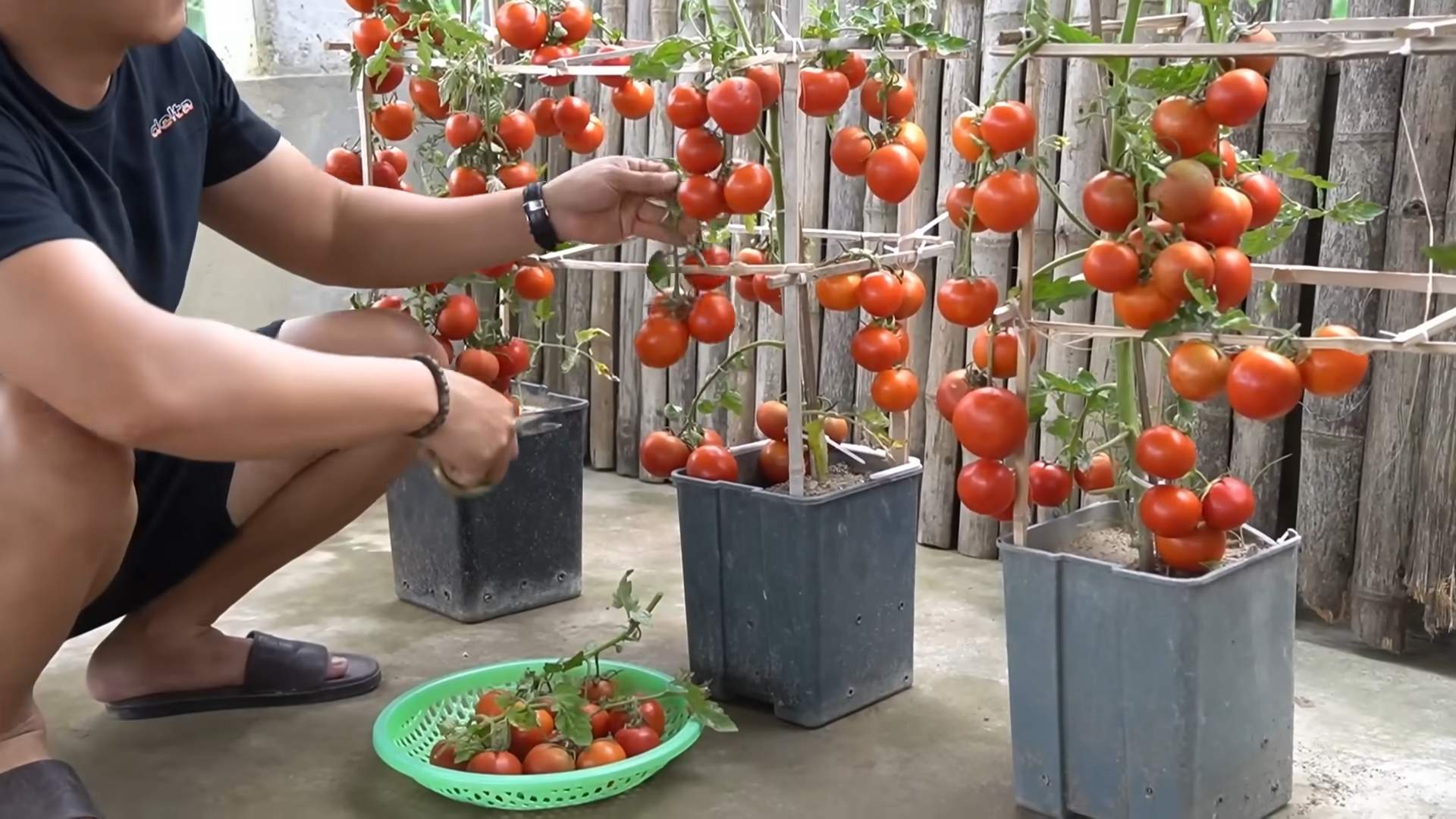
DIY Waterless Tomato Growing: A Guide to Self-Sufficient Gardening
Hey there, fellow gardening enthusiasts! Ever dreamed of growing juicy, delicious tomatoes without constantly worrying about watering them? Well, I’m here to tell you it’s totally possible! This guide will walk you through a fantastic DIY method for growing tomatoes using a self-watering system that minimizes water usage and maximizes your harvest. Get ready to ditch the daily watering routine and embrace a more sustainable way to grow your favorite summer fruit!
What is Waterless Tomato Growing?
Okay, so “waterless” might be a bit of a misnomer. We’re not *actually* growing tomatoes without any water at all. Instead, we’re creating a self-watering system that drastically reduces the amount of water needed and delivers it directly to the roots where it’s most effective. This method relies on a buried container that acts as a reservoir, slowly releasing moisture into the surrounding soil. Think of it as a slow-release drip irrigation system, but DIY style!
Benefits of Waterless Tomato Growing
Before we dive into the how-to, let’s quickly recap why this method is so awesome:
* Water Conservation: This is the big one! You’ll use significantly less water compared to traditional watering methods.
* Reduced Weeding: The surface of the soil stays drier, which discourages weed growth. Less weeding means more time to enjoy your garden!
* Healthier Plants: Consistent moisture at the roots promotes strong, healthy growth and reduces the risk of blossom end rot.
* Increased Yields: Happy, well-hydrated plants produce more tomatoes!
* Less Effort: Once the system is set up, you’ll spend less time watering and more time harvesting.
* Environmentally Friendly: Conserving water is always a good thing for the planet.
Materials You’ll Need
Alright, let’s gather our supplies. Here’s what you’ll need to build your waterless tomato growing system:
* 5-Gallon Buckets (or similar sized containers): These will be our water reservoirs. Make sure they’re food-grade plastic if possible. You’ll need one bucket per tomato plant.
* Lids for the Buckets: These help prevent evaporation and keep debris out of the water reservoir.
* Drill with Various Drill Bits: We’ll need to drill holes for drainage, wicking, and filling.
* PVC Pipe (1-2 inch diameter): This will be our fill tube, allowing us to easily add water to the reservoir. The length will depend on how deep you bury the bucket. Aim for a length that extends a few inches above the soil surface.
* PVC Pipe Cap: To cover the fill tube and prevent debris from falling in.
* Landscape Fabric or Burlap: This will act as a filter to prevent soil from clogging the drainage holes.
* Gravel or Small Rocks: To create a drainage layer at the bottom of the bucket.
* Potting Mix: A good quality potting mix is essential for healthy tomato growth.
* Compost: To enrich the soil and provide nutrients.
* Tomato Seedlings: Choose your favorite tomato varieties!
* Optional: Slow-Release Fertilizer: To provide a steady supply of nutrients throughout the growing season.
* Optional: Mulch: To further conserve moisture and suppress weeds. Straw, wood chips, or shredded leaves work well.
* Measuring Tape or Ruler: For accurate measurements.
* Gloves: To protect your hands.
* Safety Glasses: To protect your eyes when drilling.
Step-by-Step Instructions: Building Your Waterless Tomato System
Okay, let’s get our hands dirty! Here’s how to build your waterless tomato growing system:
1. Preparing the Buckets
1. Drill Drainage Holes: Start by drilling several (around 10-15) drainage holes in the bottom of each bucket. Use a drill bit that’s about 1/4 inch in diameter. These holes will allow excess water to drain out and prevent the soil from becoming waterlogged.
2. Drill Wicking Holes: Next, drill several smaller holes (about 1/8 inch in diameter) around the sides of the bucket, near the bottom. These holes will allow water to wick out into the surrounding soil. Space them evenly around the bucket.
3. Drill Fill Tube Hole: Now, drill a hole in the lid of the bucket that’s slightly smaller than the diameter of your PVC pipe. This hole will hold the fill tube in place. Make sure the hole is located towards the edge of the lid, so it doesn’t interfere with planting the tomato seedling.
2. Assembling the Reservoir
1. Add Drainage Layer: Place a layer of gravel or small rocks (about 2-3 inches deep) at the bottom of each bucket. This will improve drainage and prevent the drainage holes from becoming clogged.
2. Line with Landscape Fabric: Cut a piece of landscape fabric or burlap that’s large enough to line the inside of the bucket, covering the gravel layer and extending up the sides. This will prevent soil from washing into the gravel and clogging the drainage holes.
3. Insert Fill Tube: Insert the PVC pipe into the hole in the lid. It should fit snugly. If necessary, you can use a bit of silicone sealant to secure it in place.
4. Cap the Fill Tube: Place the PVC pipe cap on top of the fill tube to prevent debris from falling in.
3. Preparing the Planting Site
1. Dig the Holes: Dig holes in your garden bed or planting area that are large enough to accommodate the buckets. The top of the bucket should be level with the surrounding soil surface.
2. Amend the Soil: Mix compost into the soil around the planting holes to improve its fertility and drainage. I usually go for a 50/50 mix of existing soil and compost.
4. Planting the Tomatoes
1. Place the Buckets: Carefully place the prepared buckets into the holes you dug.
2. Fill with Potting Mix: Fill the buckets with a good quality potting mix, leaving a few inches of space at the top.
3. Plant the Seedlings: Gently remove the tomato seedlings from their containers and plant them in the center of the buckets.
4. Water Thoroughly: Water the seedlings thoroughly after planting to help them establish their roots.
5. Mulching and Fertilizing
1. Apply Mulch: Apply a layer of mulch (straw, wood chips, or shredded leaves) around the base of the tomato plants to conserve moisture and suppress weeds.
2. Add Slow-Release Fertilizer (Optional): If desired, add a slow-release fertilizer to the potting mix according to the package instructions. This will provide a steady supply of nutrients throughout the growing season.
6. Watering and Maintenance
1. Fill the Reservoir: Fill the water reservoir (the bucket) through the fill tube. Initially, you may need to fill it more frequently until the surrounding soil becomes saturated.
2. Monitor Moisture Levels: Check the moisture levels of the surrounding soil regularly. You can do this by sticking your finger into the soil. If the soil feels dry, fill the reservoir again.
3. Prune and Support: Prune your tomato plants regularly to encourage air circulation and fruit production. Provide support for the plants using stakes, cages, or trellises.
4. Monitor for Pests and Diseases: Keep an eye out for pests and diseases and take appropriate action if necessary.
Tips for Success
* Choose the Right Tomato Varieties: Some tomato varieties are better suited for container growing than others. Determinate varieties (bush tomatoes) tend to be more compact and manageable than indeterminate varieties (vining tomatoes).
* Use High-Quality Potting Mix: A good quality potting mix is essential for healthy tomato growth. Avoid using garden soil, as it can become compacted and poorly drained in containers.
* Provide Adequate Sunlight: Tomatoes need at least 6-8 hours of sunlight per day to thrive.
* Water Deeply and Infrequently: When you do water, fill the reservoir completely. This will encourage deep root growth.
* Fertilize Regularly: Tomatoes are heavy feeders and need regular fertilization to produce a good crop. Use a balanced fertilizer or a tomato-specific fertilizer.
* Monitor for Pests and Diseases: Keep an eye out for pests and diseases and take appropriate action if necessary.
* Don’t Overwater: While it’s important to keep the soil moist, avoid overwatering, as this can lead to root rot.
* Adjust Watering Based on Weather: During hot, dry weather, you’ll need to water more frequently. During cool, wet weather, you’ll need to water less frequently.
* Consider Companion Planting: Planting certain herbs
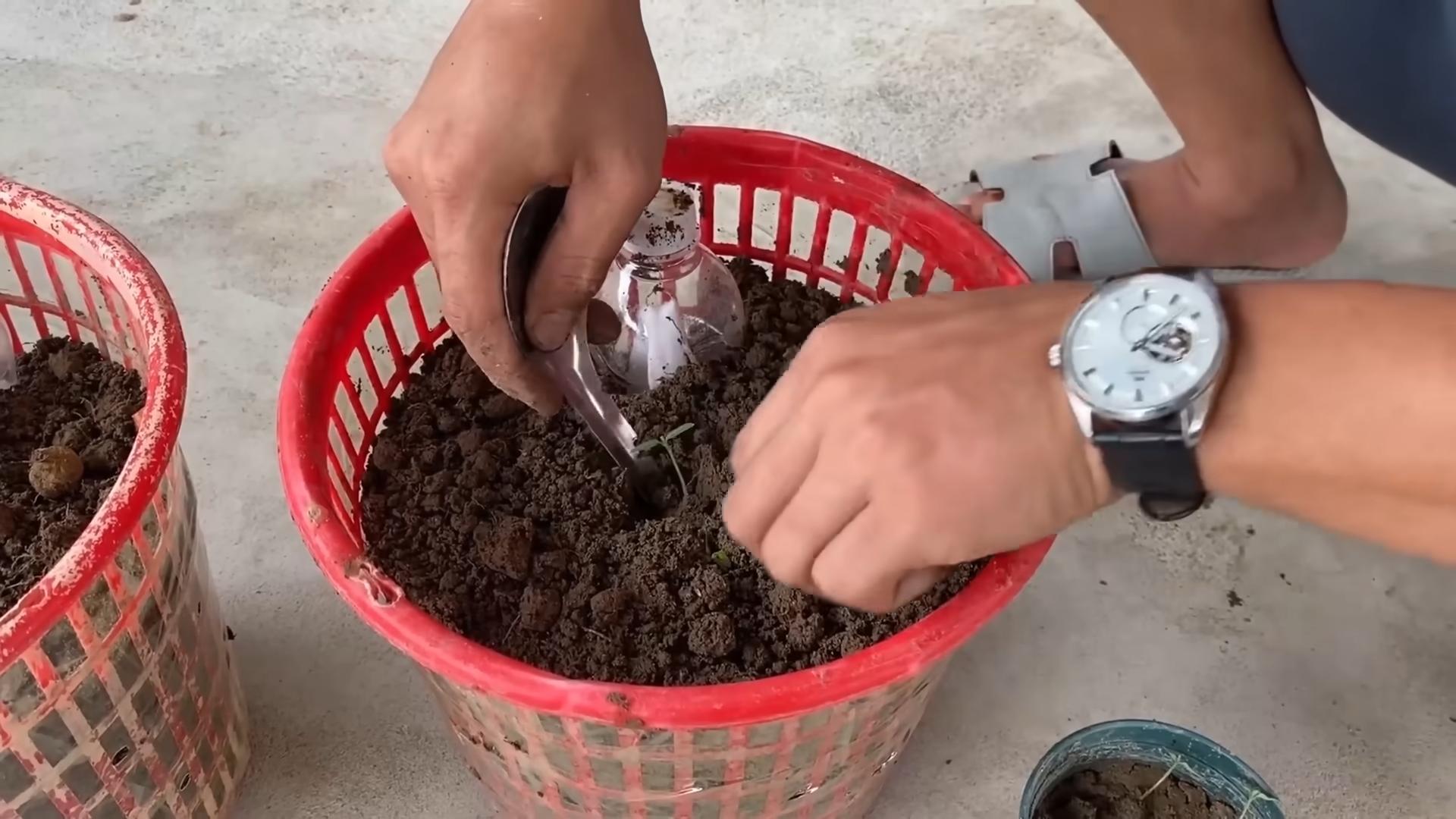
Conclusion
So, there you have it – the revolutionary waterless tomato growing method! It might sound like something out of a science fiction novel, but it’s a surprisingly simple and effective way to cultivate delicious, vibrant tomatoes, even in water-scarce environments or for those of us who are simply looking to reduce our water consumption. This isn’t just about saving water; it’s about unlocking the full potential of your tomato plants and enjoying a harvest bursting with flavor.
Why is this a must-try? Because it challenges conventional wisdom and delivers exceptional results. Think about it: no more daily watering, no more worrying about overwatering or underwatering, and no more nutrient runoff polluting our precious waterways. You’re essentially creating a self-sufficient ecosystem for your tomato plants, allowing them to thrive with minimal intervention. The deep watering at the beginning encourages deep root growth, making the plants more resilient to drought and temperature fluctuations. Plus, the reduced humidity around the plants minimizes the risk of fungal diseases, a common problem in traditional tomato gardening.
But the beauty of this method lies in its adaptability. Feel free to experiment with different soil amendments to tailor the growing medium to your specific climate and tomato variety. For instance, if you live in a particularly hot and dry area, consider adding more moisture-retentive materials like coco coir or vermiculite to the soil mix. You can also adjust the amount of organic matter based on the nutrient needs of your chosen tomato variety. Heirloom tomatoes, for example, often benefit from a richer soil mix.
Another exciting variation is to incorporate companion planting into your waterless tomato garden. Basil, marigolds, and garlic are all excellent companions for tomatoes, helping to deter pests and improve the overall health of your plants. You can even create a mini-ecosystem within your container, attracting beneficial insects that will further protect your tomatoes.
Don’t be afraid to get creative and personalize this method to suit your own gardening style and preferences. The key is to understand the principles behind it – deep watering, well-draining soil, and minimal disturbance – and then adapt them to your specific circumstances.
We wholeheartedly encourage you to give this waterless tomato growing technique a try. It’s a rewarding experience that will not only provide you with a bountiful harvest but also deepen your connection to nature and inspire you to think differently about sustainable gardening practices.
Once you’ve tried it, we’d love to hear about your experience! Share your tips, tricks, and successes in the comments below. Let’s build a community of waterless tomato growers and learn from each other’s experiences. Together, we can revolutionize the way we grow tomatoes and create a more sustainable future for our planet. So, grab your seeds, prepare your soil, and get ready to experience the joy of waterless tomato growing!
Frequently Asked Questions (FAQ)
What exactly is “waterless tomato growing,” and how does it work?
Waterless tomato growing, despite its name, doesn’t mean completely eliminating water. It refers to a method where you deeply water your tomato plants only once at the beginning of the growing season, relying on a specially prepared soil mix and the plant’s own root system to sustain it throughout its life cycle. The deep watering encourages the roots to grow deep down into the soil, accessing moisture reserves that would otherwise be unavailable. The well-draining soil prevents waterlogging, which can be detrimental to tomato plants. This method promotes self-sufficiency and reduces the need for frequent watering, making it ideal for water conservation and busy gardeners.
What kind of soil mix is best for waterless tomato growing?
The ideal soil mix for waterless tomato growing should be well-draining, nutrient-rich, and capable of retaining some moisture. A good starting point is a mix of equal parts:
* **High-quality potting soil:** Provides essential nutrients and structure.
* **Compost:** Adds organic matter, improves drainage, and releases nutrients slowly.
* **Perlite or Vermiculite:** Enhances drainage and aeration, preventing waterlogging.
* **Coco Coir:** Helps retain moisture without becoming waterlogged.
You can adjust the proportions based on your local climate and the specific needs of your tomato variety. For example, in drier climates, you might increase the amount of coco coir to improve moisture retention.
What tomato varieties are best suited for waterless growing?
While most tomato varieties can be grown using the waterless method, some are naturally more drought-tolerant and perform exceptionally well. These include:
* **Heirloom varieties:** Many heirloom tomatoes have been cultivated for generations in diverse climates and have developed natural resilience.
* **Determinate varieties:** These varieties tend to be more compact and require less water than indeterminate varieties.
* **Drought-tolerant varieties:** Some tomato varieties are specifically bred for drought resistance. Look for varieties labeled as “drought-tolerant” or “heat-tolerant.”
Experiment with different varieties to see what works best in your specific environment.
How do I know if my tomato plants need more water, even with the waterless method?
While the goal is to minimize watering, it’s essential to monitor your plants for signs of stress. Look for:
* **Wilting leaves:** This is a common sign of dehydration.
* **Curling leaves:** This can also indicate water stress.
* **Dry soil:** Check the soil moisture by inserting your finger a few inches into the soil. If it feels dry, your plants may need a supplemental watering.
* **Stunted growth:** If your plants are not growing as expected, it could be a sign of water stress.
If you notice any of these signs, water your plants deeply, but avoid overwatering.
Can I use this method for growing tomatoes in containers?
Yes, the waterless tomato growing method is particularly well-suited for container gardening. Choose a large container with good drainage holes. The larger the container, the more soil volume you’ll have, and the less likely your plants will be to dry out. Use the recommended soil mix and follow the same watering instructions as for in-ground planting.
What about fertilizing? How do I provide nutrients to my tomato plants without watering?
Fertilizing is still important for waterless tomato growing. You can incorporate slow-release fertilizer granules into the soil mix at planting time. These granules will gradually release nutrients over several months, providing a steady supply of food for your plants. You can also use organic amendments like compost tea or worm castings to provide additional nutrients. Apply these amendments directly to the soil surface, allowing them to slowly leach into the soil with rainfall or occasional supplemental watering.
What if it rains a lot? Will this method still work?
In areas with heavy rainfall, it’s even more crucial to ensure excellent drainage. Amend your soil mix with plenty of perlite or vermiculite to prevent waterlogging. You may also need to provide some protection from excessive rain, such as a temporary shelter or a well-draining raised bed. Monitor your plants closely for signs of overwatering, such as yellowing leaves or root rot.
Is this method suitable for all climates?
The waterless tomato growing method can be adapted to various climates, but it’s essential to consider your local conditions. In hot, dry climates, you’ll need to focus on moisture retention by using more coco coir or vermiculite in your soil mix. In cooler climates, you may need to provide some protection from frost. Monitor your plants closely and adjust your watering and fertilization practices as needed.
How much water does this method actually save?
The amount of water saved will vary depending on your climate, soil type, and tomato variety. However, you can expect to save a significant amount of water compared to traditional watering methods. Many gardeners report saving up to 75% of their water usage by using the waterless method. This can make a big difference, especially in areas with water restrictions or drought conditions.
What are the benefits of waterless tomato growing besides water conservation?
Besides saving water, waterless tomato growing offers several other benefits:
* **Reduced risk of fungal diseases:** By minimizing watering, you reduce humidity around the plants, which helps prevent fungal diseases.
* **Stronger root systems:** The deep watering encourages roots to grow deep down into the soil, making the plants more resilient to drought and temperature fluctuations.
* **Improved flavor:** Some gardeners believe that waterless growing can enhance the flavor of tomatoes by concentrating the sugars and acids in the fruit.
* **Less maintenance:** Once established, waterless tomato plants require less frequent watering and overall maintenance.
* **Environmentally friendly:** By reducing water consumption and fertilizer runoff, waterless tomato growing is a more sustainable and environmentally friendly gardening practice.

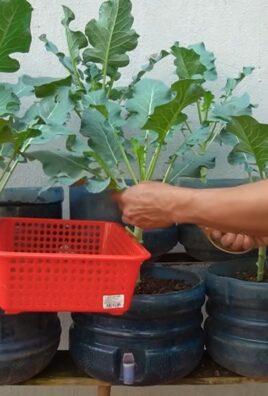
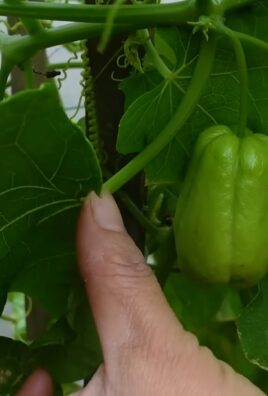
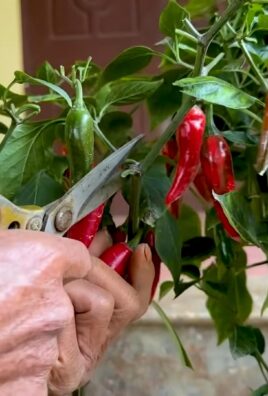
Leave a Comment